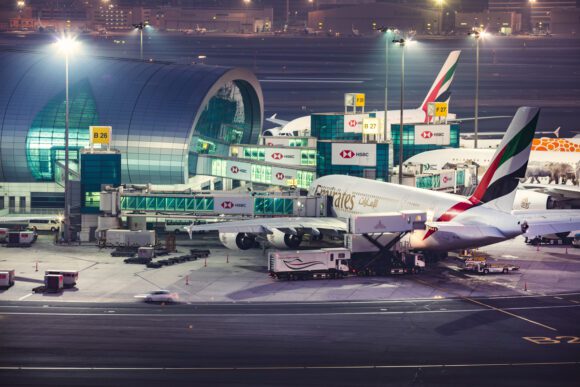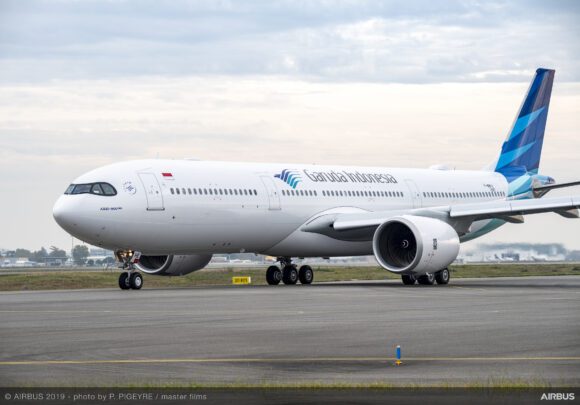
Sir Tim Clark President Emirates Airline Credit Emirates 2 1 scaled
It’s a major change of the guards that’s about to happen at Emirates in June 2020 when Sir Tim Clark is to relinquish his position as President of the successful Middle East airline. On December 24, Emirates chairman and chief executive Sheikh Ahmed bin Saeed al Maktoum informed staff that Clark will leave his post but stay on as an advisor to Emirates as long as he wants to.
Off late, retirement had become a standard topic in interviews with Sir Tim who turned 70 on November 22. But each time he would give you that enigmatic smile, shrug his shoulders and would tell you he had not made up his mind yet. “Businesses change, we’re not here indefinitely”, he said at last September’s media roundtable in London.
Clark has played an instrumental role in establishing Emirates to where it is now, the biggest worldwide long-haul airline operating the biggest Airbus A380-fleet out of Dubai International Airport. He joined the airline in 1985 after ten years with Gulf Air and some months after Emirates was established in 1984. He became part of the team that formed Emirates during the first two decades, led by Sheikh Ahmed and Sir Maurice Flanagan (who retired in 2013 and passed away two years later). Together they made Emirates operate their first flight on October 25, 1985, to Karachi (Pakistan) with a leased Airbus A300-B4.
Clark’s role at Emirates in these formative years is fittingly summed up in the only book on the airline’s history by Graeme Wilson, “Emirates – The airline of the future.” It was published in 2005, so before the era of massive growth. “(Clark’s) statistical models, initiated at the beginning of the new carrier, would be the building blocks that would allow Emirates to become one of the biggest and most successful carriers in the world.” And: “Perhaps the greatest strategist and planner in the airline industry is Airline President Tim Clark.” This still applies 14 years later as Clark continues to look for opportunities based on his strategic planning.
Indeed, Clark always has made sure that he got the numbers right before he embarked on new markets and routes, aircraft and cabin products. When Emirates had just operated its first services with a minimum fleet of 737 and A300, he pushed to get some extra 727s. Clark helped Airbus specify the A300-600R, a type that became the backbone aircraft for growth in the first decade before the Boeing 777 would take over that role and was later followed by the A380. He was the man behind the revolutionary First Class suites on the A340-500 that helped to open up the North American market, albeit two years later than planned because of the effects 9/11 had on air travel.
Clark made the A380 work for Emirates
Clark has also made the A380 work for Emirates, making it the only airline to be really successful with the double-decker. The A380 is not just an aircraft with massive seat capacity, but Clark developed her into a marketing tool with its shower spa and bar lounge that opened up whole new markets and spurred Emirates onto another decade of growth.
It’s this strategic and product thinking that Clark has always liked the most. You could witness it at the 2017 Dubai Air Show when he passionately went at large to explain the particularities of the new First Class suites on the Boeing 777 and 777X that include cameras to give passengers a window-seat like view. That’s what he has been best at and something he will probably do for as long as he wants to: figure out new business models and products.
Clark, who was invested as Knight of the Most Excellent Order of the British Empire in 2014, Officier de la Legion d’Honneur of France in 2009 and was laureled on many occasions, has always been a highly rated speaker at events and conferences. Always outspoken and frank, he used his position to share his view with the aviation industry, influence others and didn’t shy away from bashing when he thought it was needed.
Like last September, when he criticized airframers and engine makers for their poor reliability and quality and said Emirates would refuse to confirm future orders until the OEM’s would have their act together. Which happened some two months later at Dubai Air Show when Emirates placed new orders after all.
Delivery of the 100th A380 to Emirates in November 2017. (Airbus)
Tim Clark would have loved to welcome as President the first 777-9 next year, an aircraft that was ordered in 2013 under his helm and which he is raving about as far as unit revenues are concerned. He will have to wait at least a year longer until 2021. While the latest fleet announcements seem to have come after a messy decision-making process, at the same time they confirm Emirates under Clark has taken its time for a careful look at how to grow in the near future as it selected the A350-900 and 787-9 for the medium-haul fleet. These widebodies should allow Emirates to grow in ‘no uncertain terms’ (Clark) in the early twenties, he said at Dubai Air Show.
For a long time, it was expected Thierry Antinori was qualified best to succeed Clark as President, but he unexpectedly retired last May. Since then, Emirates has appointed Adnan Kazim as Chief Commercial Officer and Adel Al Radha as Chief Operating Officer as well as moving other Emiratis to influential positions.
At the September media roundtable, Clark said: “I am a believer in trying to do the right things regarding employing local workforce. The two guys have worked with me very closely for a number of decades and I have the full belief in their competence and their ability to deal with whatever comes at them. I am particularly proud to have some nationals at very senior levels. So whenever we can find people within the group who are able to step up that is the right thing to do. Personally, if you can get a Dubai-national to sit in my job that would be quite a good thing really.”
Views: 37





